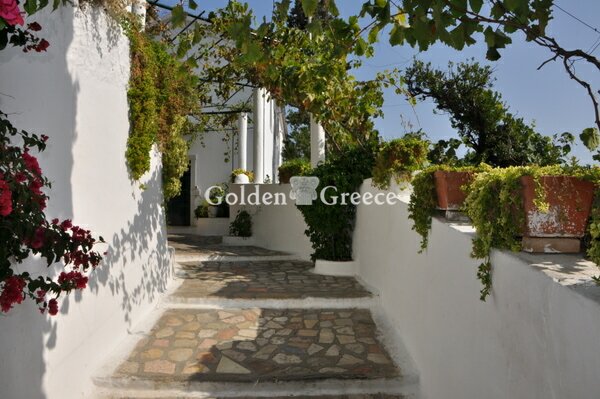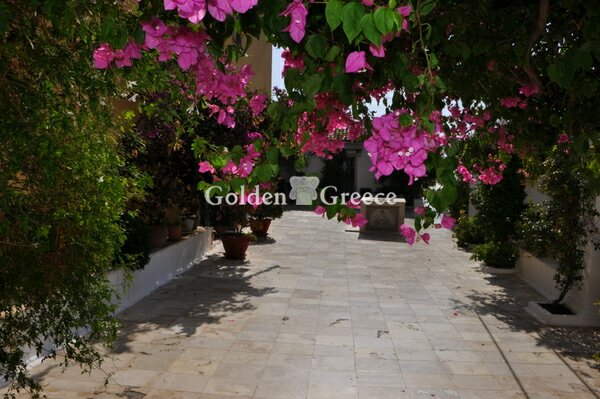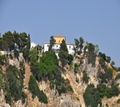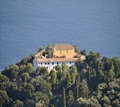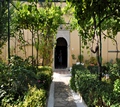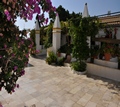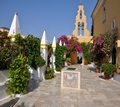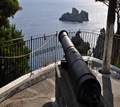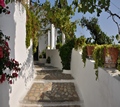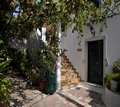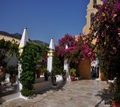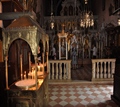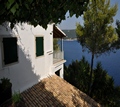
The monastery of Panagia is built on the highest point of a green hill and dominates the right side of the bay of Paleokastritsa. The original core of the Monastery dates back to 1228 according to an old inscription at its entrance. But historical research locates the beginning of its existence in the middle of the 15th century. Later are the chapel of the monastery, the monks' cells and the courtyard, which were built in the 18th century.
I. Moni took the name "Paleokastritissa" from a natural castle which served as a bastion of the then inhabited area.
The monastery has a remarkable collection of icons, holy books and other religious relics. In the Monastery, remarkable icons of mainly Cretan style dating back between the 15th and 18th centuries have been preserved. For example, we mention the icon of the Dormition of the Blessed Virgin Mary by Emm. Lambrados (late 16th or early 17th century), the icons of Georgios Chrysoloras (mid 18th century), as well as the icon found in Despotiko, the Virgin Mary in the press of Skopiotissa, which is painted on cowhide, which according to experts is a work of the 18th century.
Also, inside the monastery you will see a small traditional olive press.
A scenic route leads you to the monastery with the road passing through areas overgrown with cypresses, olives and other types of plants. The view from the monastery is amazing. You can see the ruins of the famous Angelokastro, and the enchanting coves of Paleokastritsa that create images of infinite beauty.
The Holy Monastery celebrates on August 15th the feast of the Dormition of the Virgin and the Life-giving Spring, the Friday of the Assumption.
Editor: Fotini Anastasopoulou






